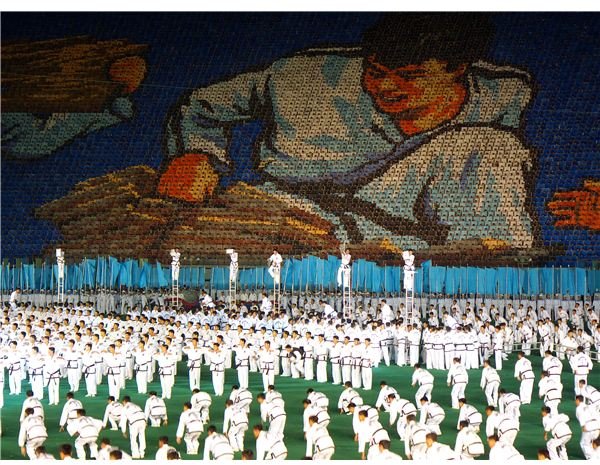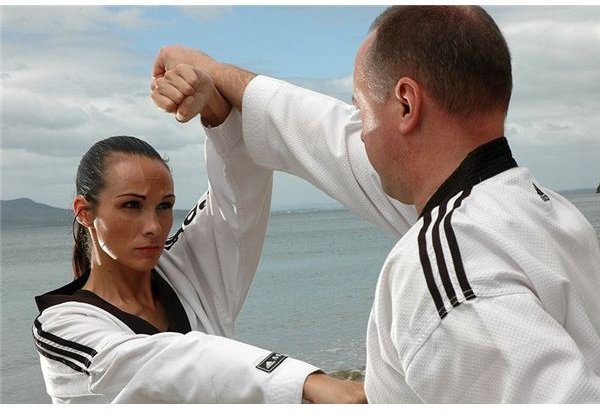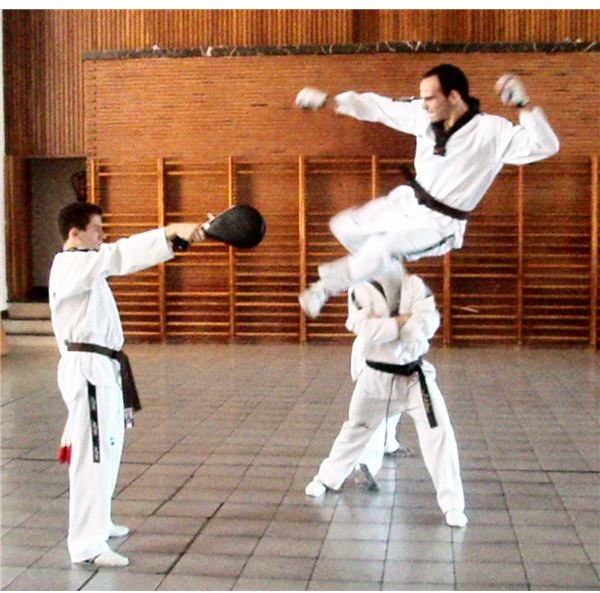The History of Taekwondo
Roots of the Art of Taekwondo
The history of Taekwondo has no tangible beginning. As with most of the Asian martial arts, it is more than likely that the precursors to the style were practiced for thousands of years before being ratified into a semi-permanent style.
However, most historians believe that Taekwondo emerged as an art in its own right in the late BCE period, when the Korean peninsula was separated into three kingdoms – Silla, Koguryo and Paekche. At the time referred to as Tae Kyon or Subak, the art was developed by warriors from the Koguryo kingdom in the Korean Peninsula. When the kingdom of Silla was attacked by Japanese pirates, warriors of Koguryo were sent to the kingdoms aid. During this time of cooperation some of the Sillan warriors were instructed in Subak. It is this group of warriors who would later travel the peninsula, teaching the art to many people.
Taekwondo Through the Ages
The focus and techniques of the art have changed throughout the history of Taekwondo. For most of the first millennium CE, wherein Subak was an art taught mostly to military personnel, the focus of the training was primarily for fitness and recreation, allowing soldiers to exercise while developing instincts and reflexes. King Uijong, who held the Korean throne from 1147 until 1170, changed the art’s emphasis from fitness to being primary a fighting style.
Sometime in the second millennium CE, Subak began to be taught to civilian students, not just the military, as had previously been the case. This led to the art growing even more popular within the country. However, over the years as military action became defunct in favor diplomatic resolutions, Subak became less and less popular, forcing the emphasis to be switched once again to a more fitness and spiritually orientated activity.
Death of Subak

Subak as it existed in history died in 1909, when Korea was invaded by the Japanese army. In an attempt to restrict the national spirit of the country, the Japanese banned all Korean martial arts, language and attempted to eradicate the language by the burning of books.
This caused the art of Subak to become more of an underground art, practiced in secret in remote locations and in people’s homes. Due to the disorganization of the art, many divergences occurred in the art through Japan’s 36 year occupation. When Korea was liberated in 1945, many Subak organizations sprang up quickly, but each was different in their approach to the art, emphasizing different aspects of it. These went by a diverse number of names.
Post-1945 Taekwondo

Modern Taekwondo history begins in 1945, when Second Lieutenant Hong Hi Choi of the newly reformed Korean Defence Force, a black belt in Karate, began teaching the art of Tae Kyon to his soldiers at the Kwang Ju military base. After a demonstration to President Rhee, it was ordered that all Korean military personnel be trained in martial arts.
Following its successful use in the Korean War, the most prominent instructors of the art were called to a conference to determine standards for the martial art. It was at this time that the name Taekwondo was appended to the art, which roughly translates to “Way of the Hand and Foot” in Korean. The Korea Taekwondo Association was formed to administer the sport.
However, there was much conjecture as to what the regulatory body for the art should be. Hong Hi Choi, after a falling out with his KTA constituents, moved to Montreal, Canada and formed the International Taekwon-Do Federation to act as an international regulatory body.
However, when Hong hi Choi passed away the true leadership of the art was blown wide open, with the ITF and KTA (and newly formed World Taekwondo Federation) both battling for control of the sport. However, it is unlikely either one will take total control anywhere in the future, and it is extremely unlikely the two will ever be combined into one.
Taekwondo Today

Taekwondo is one of the most popular martial arts for people of all ages and nationalities to learn. It is presided over by two competing groups, The World Taekwondo Federation (WTF) and International Taekwon-Do Federation (ITF). The WTF emphasizes more on the sparring element of the art, whereas the ITF embodies the more traditional aspects of it. Taekwondo has been performed at the Summer Olympics since the 2000 Olympic Games in Sydney.
It is estimated that there are approximately 30 million Taekwondo students today, with countless schools, each focusing on different aspects of the original art, or even something completely new.
References
Choi, H. (1999). History of Taekwon-Do. In ITF-Information. Retrieved August 20, 2010, from https://www.itf-information.com/information15.htm.
Morris, G. (1994). Taekwondo History. In World Martial Arts Academy – WTF Taekwondo – A Korean Martial Art. Retrieved August 20, 2010, from https://www.worldtaekwondo.com/history.htm.
Nauta, B. (n.d.). General Taekwondo Information - History. In General Taekwondo Information. Retrieved August 20, 2010, from https://www.barrel.net/history.php.
Southwick, R. (1998). A Brief History of Taekwondo. In Michigan State University. Retrieved August 20, 2010, from https://www.msu.edu/~spock/history.html.
